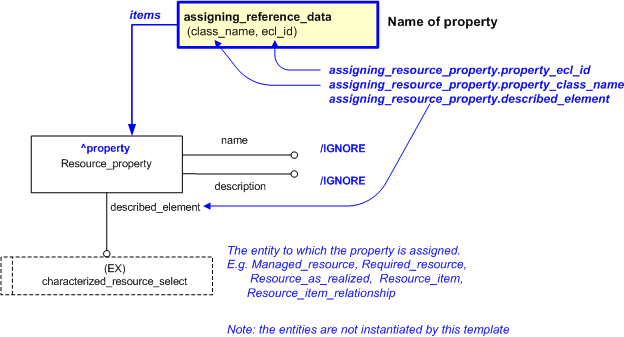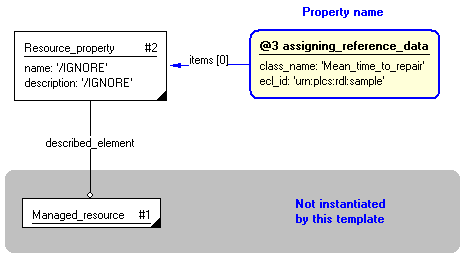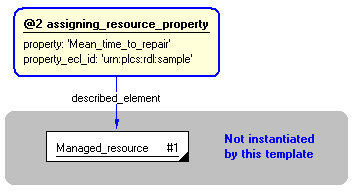Template:— assigning_resource_property (asg_res_prp)
Capability:assigning_resource_properties |
Date: 2008/03/06 21:45:39
Revision: 1.19
|
This section specifies the template assigning_resource_property.
NOTE
The template has been defined in the context of the capability
assigning_resource_properties
which provides an overall description of the
relevant parts of the ISO 10303-239 information model and a description
of related templates.
NOTE
An explanation of a template and the associated instantiation path is
provided in the
Template overview
section.
This template describes how to assign a named property to a
Managed_resource,
Required_resource,
Resource_as_realized,
Resource_item, and a
Resource_item_relationship,
or any of their subtypes.
The name of the property is provided by a class in reference data
where the property is defined.
The value representation of the property can be either numerical or textual,
but is not part of this template. This template must be used with
one (or more) of the templates
resource_property_text,
resource_property_numeric,
resource_property_range,
resource_property_limit, and
resource_property_w_tolerances.
A description of representing and relating multiple representations for a property, for
example the values of a property changing over time, is provided in capability
C056: representing_evolution_of_property_values.
The EXPRESS-G diagram in
Figure
1
shows the templates and EXPRESS entities that are required
to represent the template
"assigning_resource_property".
The text highlighted in blue shows the template parameters.
NOTE
In any exchange file, a class name should only be represented
by a single instance of
External_class.
Figure 1 — An EXPRESS-G representation of the Information model for assigning_resource_property
The graphic for the template to be used in other EXPRESS-G diagrams
is shown in Figure
2
below.
Figure 2 —
The graphical representation of assigning_resource_property template
The following input parameters are defined for this template:
The class name of the property type corresponding to the property name.
The following classes and their sub-classes can be used:
The identifier of the
External_class_library
storing the definition of the class referenced by the parameter @property.
The item to which the property is assigned
The following reference parameters are defined for this template:
Allow the
Resource_property
entity instantiated in this path to be referenced when this template is used.
%^target = $assigning_resource_property.property%
The following parameter combinations specify a uniqueness constraint:
Unique constraint: Unique property
The instantiation path shown below specifies the entities that are to be
instantiated by the template.
A description of templates and the syntax for the instantiation path is
provided in the
Templates Help/Information section.
The following entities are instantiated with attributes as specified:
The instance diagram in Figure
3
shows an example of the EXPRESS entities and templates that are instantiated by the template:
/assigning_resource_property(property_class_name='Mean_time_to_repair', property_ecl_id='urn:plcs:rdl:sample', described_element='#1')/
(an illustration of the consolidated assigning_resource_property template is shown in
Figure
4 below.)
Figure 3 — Entities instantiated by assigning_resource_property template
The instance diagram in
Figure
4
shows the graphic symbol for the template that is to be
used in other instance diagrams. The example template is:
/assigning_resource_property(property_class_name='Mean_time_to_repair', property_ecl_id='urn:plcs:rdl:sample', described_element='#1')/
Figure 4 — Instantiation of assigning_resource_property template
Characterizations
No common characterizations of the template
assigning_resource_property
have been identified. However, the ISO 10303-239 EXPRESS model
may enable other assignments to the entities instantiated by the template.




